BI-RADS 3: Current and Future Use of Probably Benign
- PMID: 29399419
- PMCID: PMC5787219
- DOI: 10.1007/s40134-018-0266-8
BI-RADS 3: Current and Future Use of Probably Benign
Abstract
Purpose of review: Probably benign (BI-RADS 3) causes confusion for interpreting physicians and referring physicians and can induce significant patient anxiety. The best uses and evidence for using this assessment category in mammography, breast ultrasound, and breast MRI will be reviewed; the reader will have a better understanding of how and when to use BI-RADS 3.
Recent findings: Interobserver variability in the use of BI-RADS 3 has been documented. The 5th edition of the BI-RADS atlas details the appropriate use of BI-RADS 3 for diagnostic mammography, ultrasound, and MRI, and discourages its use in screening mammography. Data mining, elastography, and diffusion weighted MRI have been evaluated to maximize the accuracy of BI-RADS 3.
Summary: BI-RADS 3 is an evolving assessment category. When used properly, it reduces the number of benign biopsies while allowing the breast imager to maintain a high sensitivity for the detection of early stage breast cancer.
Keywords: BI-RADS 3; Breast cancer screening; Breast imaging reporting and data system; Breast ultrasound; MRI; Mammography; Probably benign.
Conflict of interest statement
Compliance with Ethical GuidelinesKaren A. Lee, Nishi Talati, Rebecca Oudsema, and Sharon Steinberger each declare no potential conflicts of interest.This article does not contain any studies with human or animal subjects performed by any of the authors.
Figures


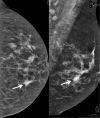

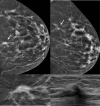
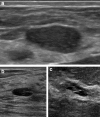


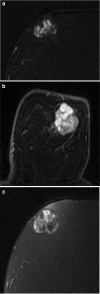
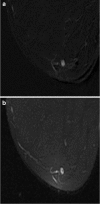
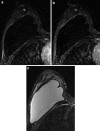
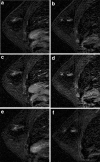
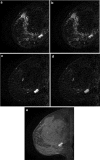
Similar articles
-
Elastography Assisted BI-RADS in the Preoperative Breast Magnetic Resonance Imaging 4a Lesions in China.J Ultrasound Med. 2023 Feb;42(2):453-461. doi: 10.1002/jum.16055. Epub 2022 Jul 10. J Ultrasound Med. 2023. PMID: 35811402
-
Interobserver Variability Between Breast Imagers Using the Fifth Edition of the BI-RADS MRI Lexicon.AJR Am J Roentgenol. 2015 May;204(5):1120-4. doi: 10.2214/AJR.14.13047. AJR Am J Roentgenol. 2015. PMID: 25905951
-
Current Status and Future of BI-RADS in Multimodality Imaging, From the AJR Special Series on Radiology Reporting and Data Systems.AJR Am J Roentgenol. 2021 Apr;216(4):860-873. doi: 10.2214/AJR.20.24894. Epub 2021 Feb 24. AJR Am J Roentgenol. 2021. PMID: 33295802 Review.
-
Potential Use of American College of Radiology BI-RADS Mammography Atlas for Reporting and Assessing Lesions Detected on Dedicated Breast CT Imaging: Preliminary Study.Acad Radiol. 2017 Nov;24(11):1395-1401. doi: 10.1016/j.acra.2017.06.003. Epub 2017 Jul 17. Acad Radiol. 2017. PMID: 28728854
-
Assessment and Management of Challenging BI-RADS Category 3 Mammographic Lesions.Radiographics. 2016 Sep-Oct;36(5):1261-72. doi: 10.1148/rg.2016150231. Epub 2016 Aug 19. Radiographics. 2016. PMID: 27541437 Review.
Cited by
-
Calcifications at Digital Breast Tomosynthesis: Imaging Features and Biopsy Techniques.Radiographics. 2019 Mar-Apr;39(2):307-318. doi: 10.1148/rg.2019180124. Epub 2019 Jan 25. Radiographics. 2019. PMID: 30681901 Free PMC article. Review.
-
Accuracy of mammography and ultrasonography and their BI-RADS in detection of breast malignancy.Caspian J Intern Med. 2021 Fall;12(4):573-579. doi: 10.22088/cjim.12.4.573. Caspian J Intern Med. 2021. PMID: 34820065 Free PMC article.
-
Evaluation of BI-RADS 3 Ultrasound Findings: the Frequency and Incidence of Malignant Lesions, and Tumor Size.Acta Med Acad. 2025 Apr;54(1):1-6. doi: 10.5644/ama2006-124.467. Acta Med Acad. 2025. PMID: 40008467 Free PMC article.
-
Epidemiological, clinical and diagnostic profile of breast cancer patients treated at Potchefstroom regional hospital, South Africa, 2012-2018: an open-cohort study.Pan Afr Med J. 2020 May 8;36:9. doi: 10.11604/pamj.2020.36.9.21180. eCollection 2020. Pan Afr Med J. 2020. PMID: 32550972 Free PMC article.
-
BI-RADS category 3, 4, and 5 lesions identified at preoperative breast MRI in patients with breast cancer: implications for management.Eur Radiol. 2020 May;30(5):2773-2781. doi: 10.1007/s00330-019-06620-y. Epub 2020 Jan 31. Eur Radiol. 2020. PMID: 32006168
References
-
- American College of Radiology . Breast imaging reporting and data system (BI-RADS) 5. Reston: American College of Radiology; 2013.
-
- D’Orsi C, Bassett L, Berg W, et al. et al. Breast imaging reporting and data system: ACR BI-RADS—breast imaging Atlas. In: D’Orsi C, Mendelson E, Ikeda D, et al.et al., editors. BI-RADS: mammography. 4. Reston: American College of Radiology; 2003. pp. 7–201.
Publication types
LinkOut - more resources
Full Text Sources
Other Literature Sources
Research Materials
